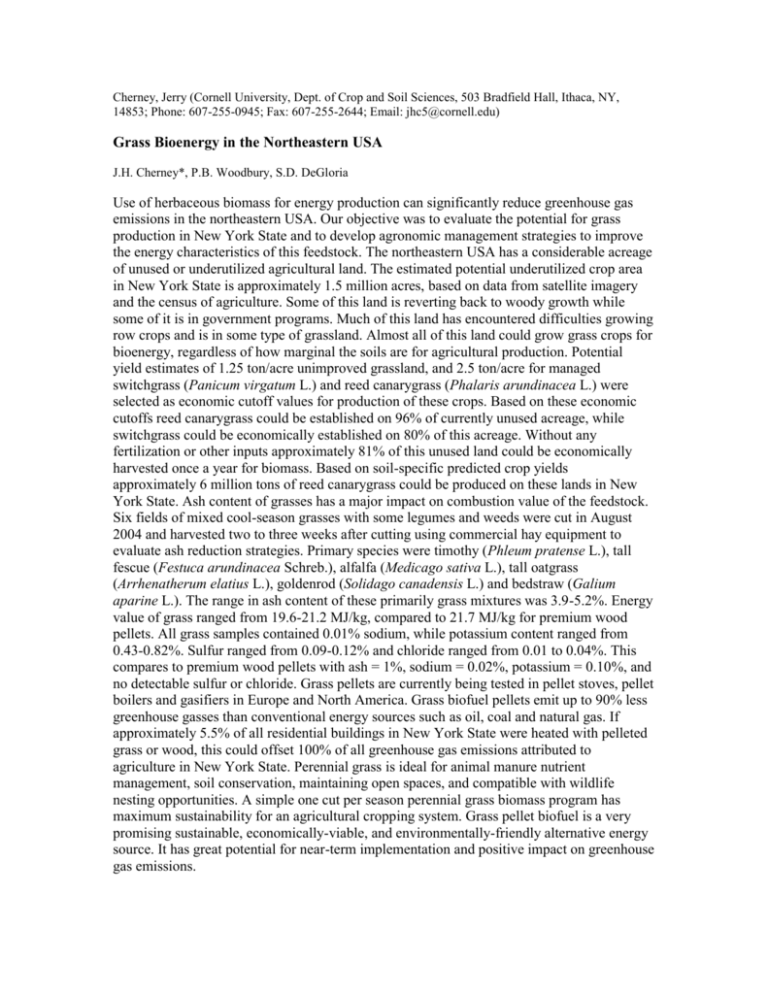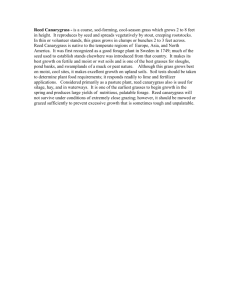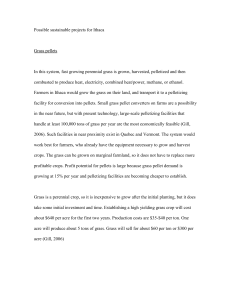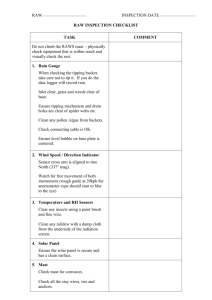Grass Bioenergy in the Northeastern USA
advertisement

Cherney, Jerry (Cornell University, Dept. of Crop and Soil Sciences, 503 Bradfield Hall, Ithaca, NY, 14853; Phone: 607-255-0945; Fax: 607-255-2644; Email: jhc5@cornell.edu) Grass Bioenergy in the Northeastern USA J.H. Cherney*, P.B. Woodbury, S.D. DeGloria Use of herbaceous biomass for energy production can significantly reduce greenhouse gas emissions in the northeastern USA. Our objective was to evaluate the potential for grass production in New York State and to develop agronomic management strategies to improve the energy characteristics of this feedstock. The northeastern USA has a considerable acreage of unused or underutilized agricultural land. The estimated potential underutilized crop area in New York State is approximately 1.5 million acres, based on data from satellite imagery and the census of agriculture. Some of this land is reverting back to woody growth while some of it is in government programs. Much of this land has encountered difficulties growing row crops and is in some type of grassland. Almost all of this land could grow grass crops for bioenergy, regardless of how marginal the soils are for agricultural production. Potential yield estimates of 1.25 ton/acre unimproved grassland, and 2.5 ton/acre for managed switchgrass (Panicum virgatum L.) and reed canarygrass (Phalaris arundinacea L.) were selected as economic cutoff values for production of these crops. Based on these economic cutoffs reed canarygrass could be established on 96% of currently unused acreage, while switchgrass could be economically established on 80% of this acreage. Without any fertilization or other inputs approximately 81% of this unused land could be economically harvested once a year for biomass. Based on soil-specific predicted crop yields approximately 6 million tons of reed canarygrass could be produced on these lands in New York State. Ash content of grasses has a major impact on combustion value of the feedstock. Six fields of mixed cool-season grasses with some legumes and weeds were cut in August 2004 and harvested two to three weeks after cutting using commercial hay equipment to evaluate ash reduction strategies. Primary species were timothy (Phleum pratense L.), tall fescue (Festuca arundinacea Schreb.), alfalfa (Medicago sativa L.), tall oatgrass (Arrhenatherum elatius L.), goldenrod (Solidago canadensis L.) and bedstraw (Galium aparine L.). The range in ash content of these primarily grass mixtures was 3.9-5.2%. Energy value of grass ranged from 19.6-21.2 MJ/kg, compared to 21.7 MJ/kg for premium wood pellets. All grass samples contained 0.01% sodium, while potassium content ranged from 0.43-0.82%. Sulfur ranged from 0.09-0.12% and chloride ranged from 0.01 to 0.04%. This compares to premium wood pellets with ash = 1%, sodium = 0.02%, potassium = 0.10%, and no detectable sulfur or chloride. Grass pellets are currently being tested in pellet stoves, pellet boilers and gasifiers in Europe and North America. Grass biofuel pellets emit up to 90% less greenhouse gasses than conventional energy sources such as oil, coal and natural gas. If approximately 5.5% of all residential buildings in New York State were heated with pelleted grass or wood, this could offset 100% of all greenhouse gas emissions attributed to agriculture in New York State. Perennial grass is ideal for animal manure nutrient management, soil conservation, maintaining open spaces, and compatible with wildlife nesting opportunities. A simple one cut per season perennial grass biomass program has maximum sustainability for an agricultural cropping system. Grass pellet biofuel is a very promising sustainable, economically-viable, and environmentally-friendly alternative energy source. It has great potential for near-term implementation and positive impact on greenhouse gas emissions.











